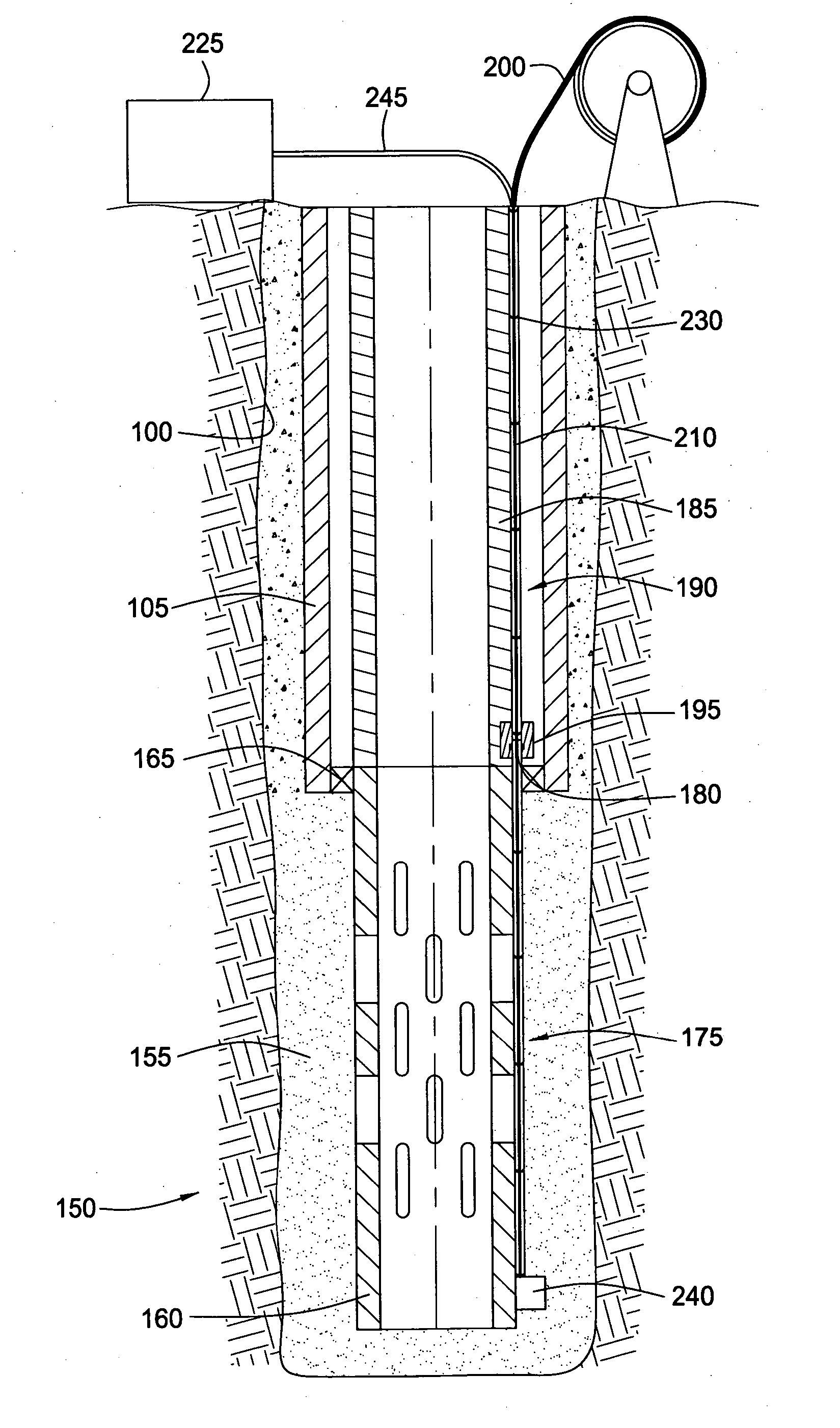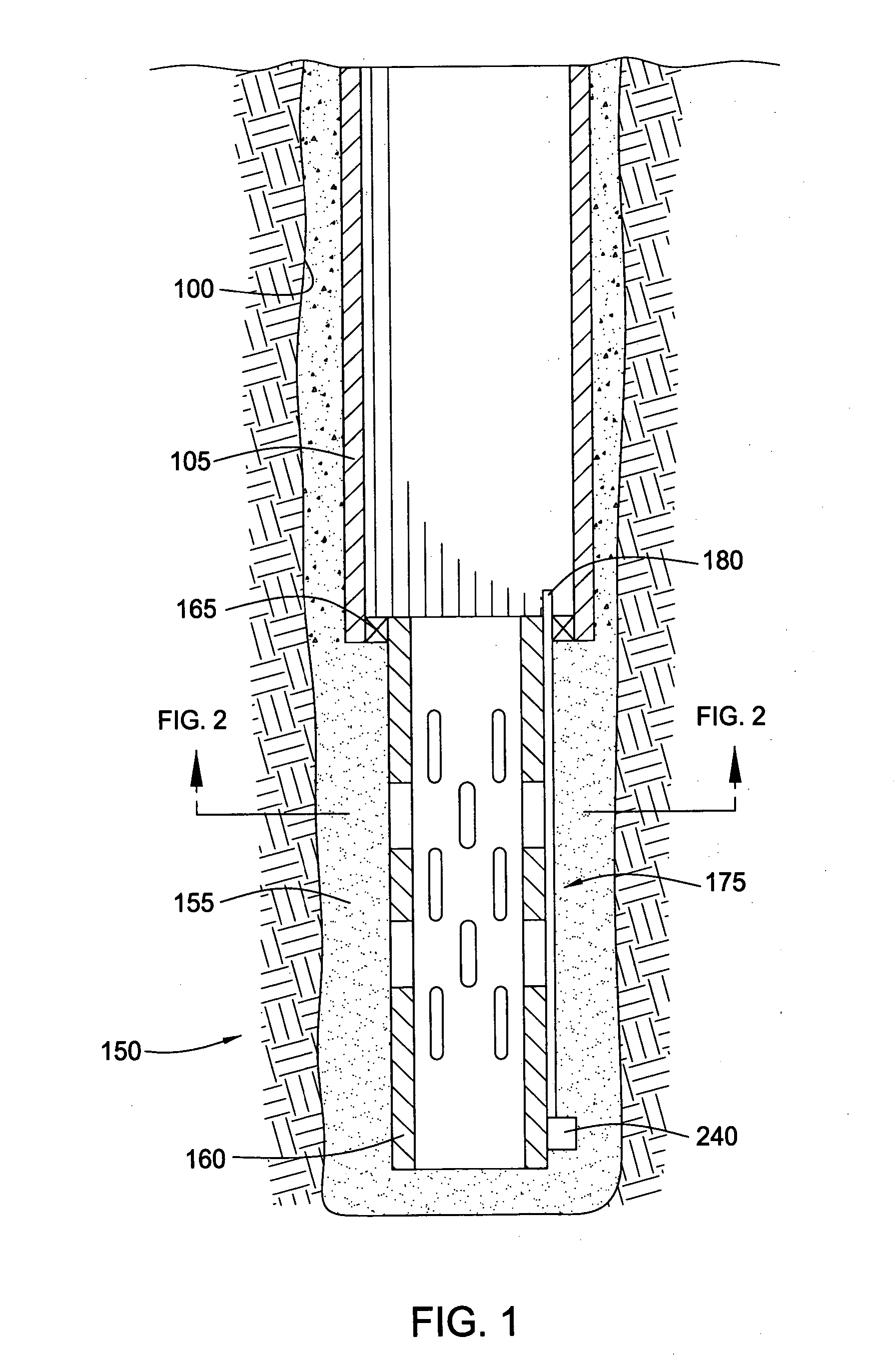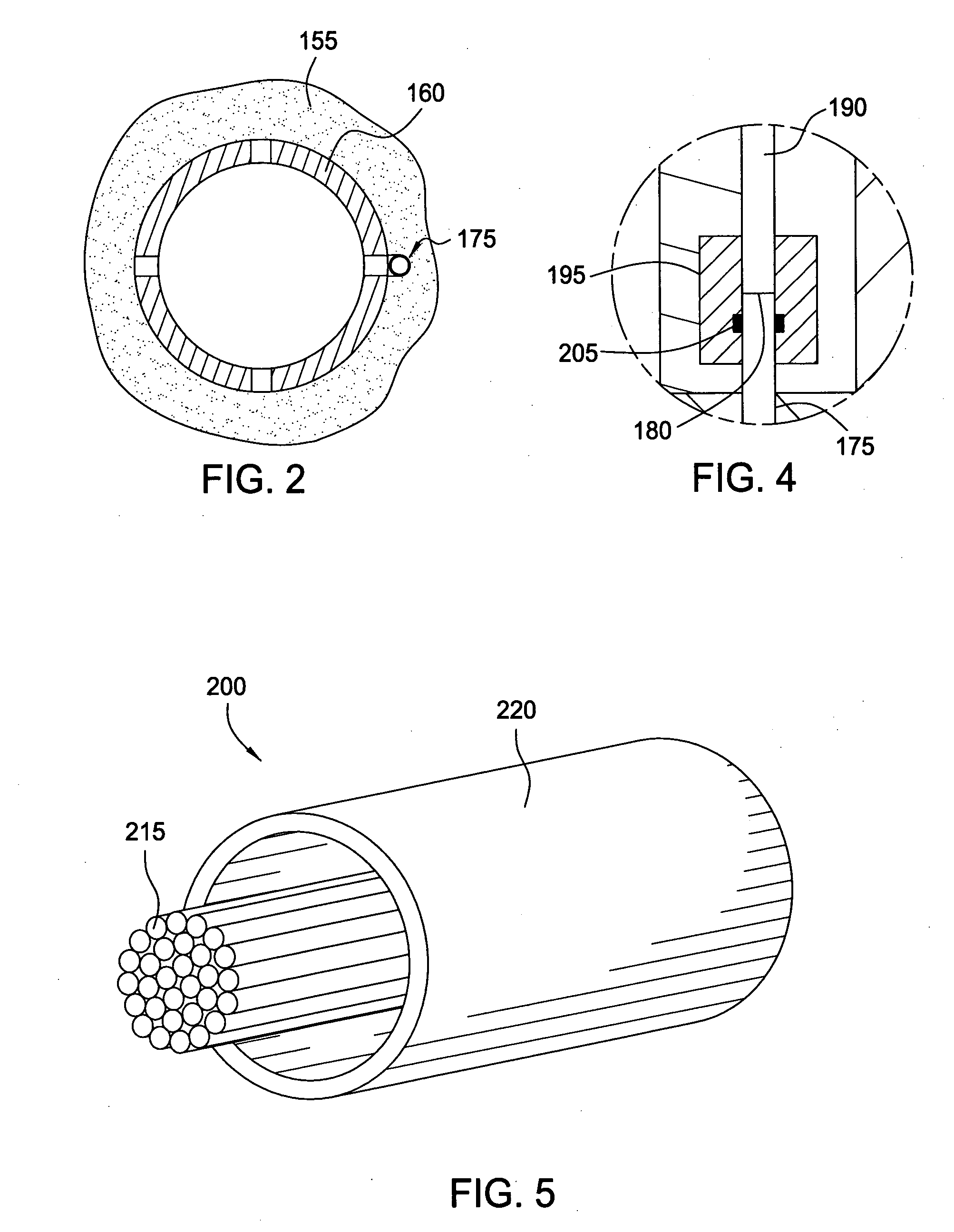Placing fiber optic sensor line
a fiber optic sensor and fiber optic technology, applied in the direction of survey, drilling pipe, borehole/well accessories, etc., can solve the problems of insufficient timely data, inability of operators to optimize production, and inability to accurately measure the effect of the sensor lin
- Summary
- Abstract
- Description
- Claims
- Application Information
AI Technical Summary
Problems solved by technology
Method used
Image
Examples
Embodiment Construction
[0022] Embodiments of the present invention generally provide a method and an apparatus for placement of a sensor arrangement in a well, such as fiber optic sensor, to monitor various characteristics of the well. For ease of explanation, the invention will be described generally in relation to a cased vertical wellbore with a sand screen and a gravel pack disposed at the lower end thereof. It is to be understood, however, that the invention may be employed in a wellbore without either a sand screen or a gravel pack. Furthermore, the invention may be employed in a horizontal wellbore or a diverging wellbore.
[0023]FIG. 1 is a cross-sectional view illustrating a wellbore 100 with a gravel pack 150 disposed at a lower end thereof. As depicted, the wellbore 100 is lined with a string of casing 105. The casing 105 provides support to the wellbore 100 and facilitates the isolation of certain areas of the wellbore 100 adjacent hydrocarbon bearing formations. The casing 105 typically extend...
PUM
 Login to View More
Login to View More Abstract
Description
Claims
Application Information
 Login to View More
Login to View More - R&D
- Intellectual Property
- Life Sciences
- Materials
- Tech Scout
- Unparalleled Data Quality
- Higher Quality Content
- 60% Fewer Hallucinations
Browse by: Latest US Patents, China's latest patents, Technical Efficacy Thesaurus, Application Domain, Technology Topic, Popular Technical Reports.
© 2025 PatSnap. All rights reserved.Legal|Privacy policy|Modern Slavery Act Transparency Statement|Sitemap|About US| Contact US: help@patsnap.com



